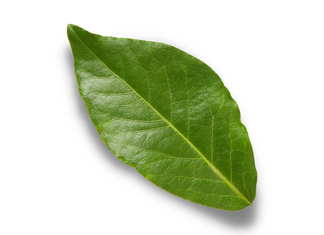Each year, an average of 30,000 new consumer packaged goods launch, making their way onto grocery store shelves (according to NielsenIQ). At the same time, consumer interest in sustainable products is growing and sustainability claims on consumer-packaged goods are becoming more common. So how are store owners and consumers meant to read between the lines and quickly determine which products are truly better for society and the environment?
Here are four questions to help consumers evaluate product sustainability using two different products: tea and potato chips.
What are the main ingredients?
Tea: The main ingredients in most teas are tea, herbs, and spices. These ingredients are usually sourced internationally or hand-picked by farming communities. Tea is a commodity that is often associated with responsible sourcing practices, like improving soil quality, protecting surrounding natural areas, and ensuring workers get paid a fair wage. Some companies may be doing more to address global environmental issues like climate change by incorporating renewable energy at the production site or investing in projects to address societal issues like improving worker wellbeing.
Potato Chips: While potato chips are often seen as an indulgence, there are still sustainability attributes associated with indulgent products. The ingredients may not be different for a sustainable versus conventional brand; therefore, the company practices matter more in determining which is more sustainable.
How Healthy or Nutritious is the product?
Tea: When comparing two types of tea, you can consider if one has a commitment to using
high quality complementary ingredients that promote health benefits like immune support,
relaxation, or improved sleep. The most sustainable products have responsibly sourcing
certifications like the Ethical Tea Partnership or Fairtrade.
Potato Chips: Even as an indulgence, potato chips can be an important snack option for
those with dietary restrictions like gluten sensitivity. Baked snacks may be a healthier choice over fried, with a couple of brands offering vegetable chips or chips with added vitamins or minerals.
What is the package made of?
Tea is often packaged in a paper box, with a string and tag. The box may have a liner to protect product quality, or something wrapped around the tea bag or the box to extend the shelf life of the product.
- Has the company made efforts to reduce the amount of packaging they use like removing extra layers of wrapping, strings, or tags?
- Is the paper box fully recyclable and does it include recycling labeling information?
- Some of the paper boxes for tea are made with recycled content, further improving the sustainability of the packaging.
- However, not all paper boxes are the same. If the box is made of virgin paper and it is not from a certified sustainable forest, the company may have cut down a lot of trees to make that tea box.
Potato Chips usually come in a bag made of multiple layers and materials including plastics and/or foil and are not yet recyclable in the U.S. Snack bags should be labeled as not recyclable so consumers know to put them in the trash. Companies are just starting to develop innovative ways to package chips more sustainably including using paper bags, cereal boxes, or canisters instead of snack bags.
On-Pack Sustainability Claims:
Have they gone beyond the conventional claim for great flavor, quality, or value to show they are investing in societal or environmental initiatives?
Tea products should have at one example of how the company supports sustainable sourcing of tea, herbs or botanicals, a sustainable packaging format, or social impact initiatives (for example, supporting worker livelihoods or improving access to education) in the local communities they source from.
A potato chip brand may have a sodium or fat reduction claim, a better packaging format, a charity partnership to alleviate hunger, or an initiative to train a new generation of diverse farmers.
If you keep these four questions in mind, you can be your own product sustainability sleuth and quickly determine which products are more sustainable.










